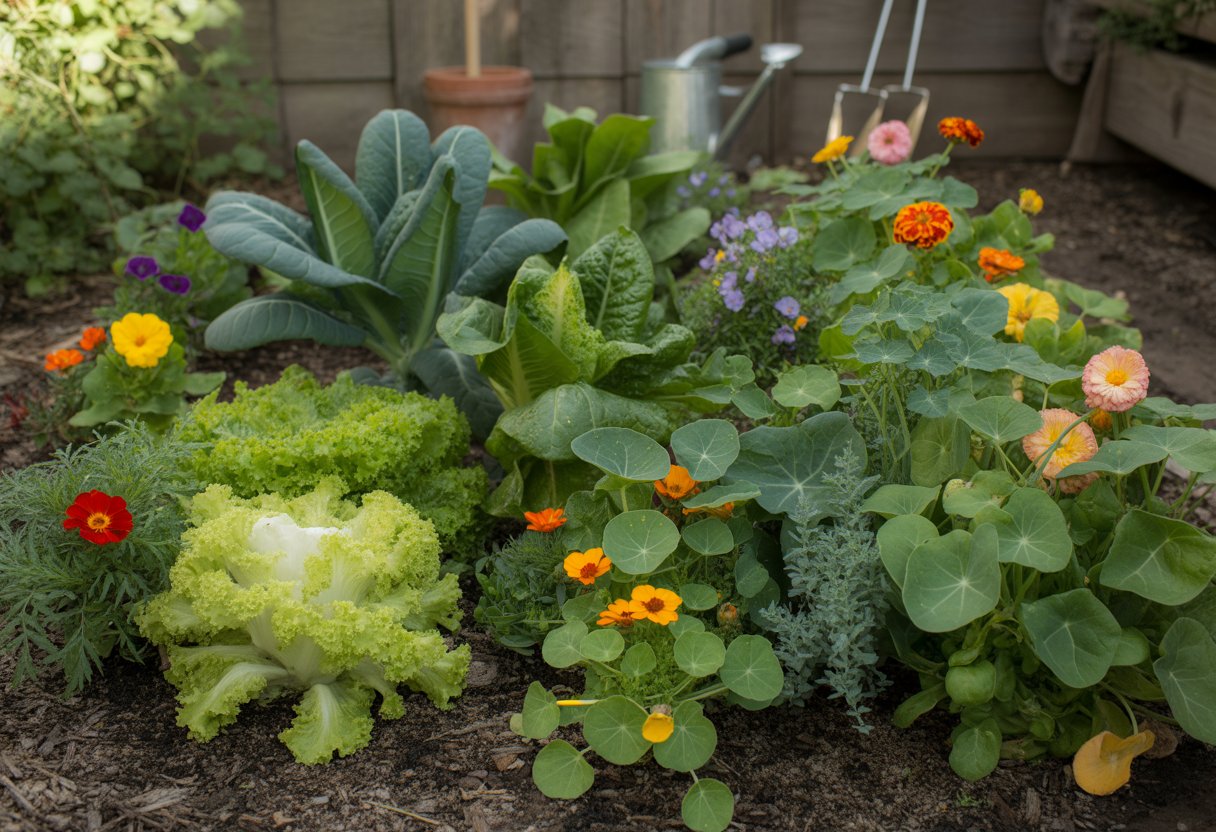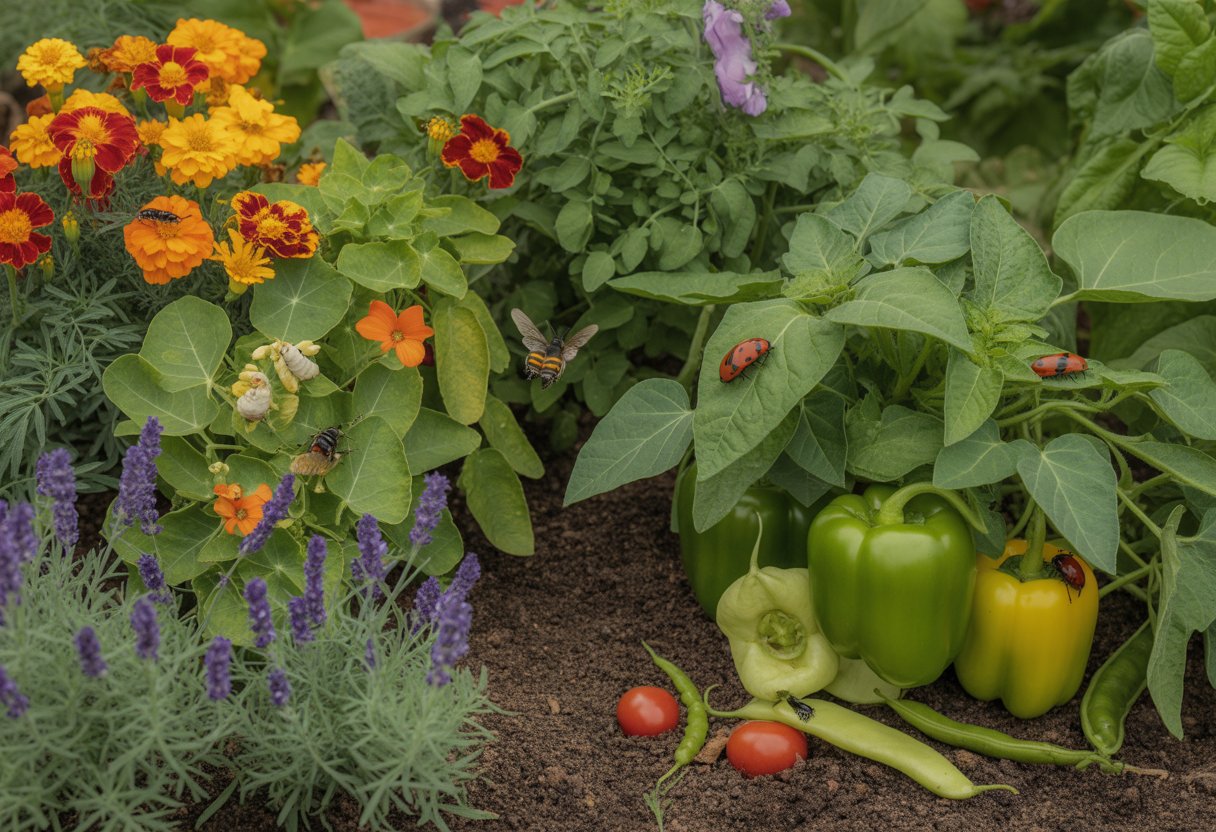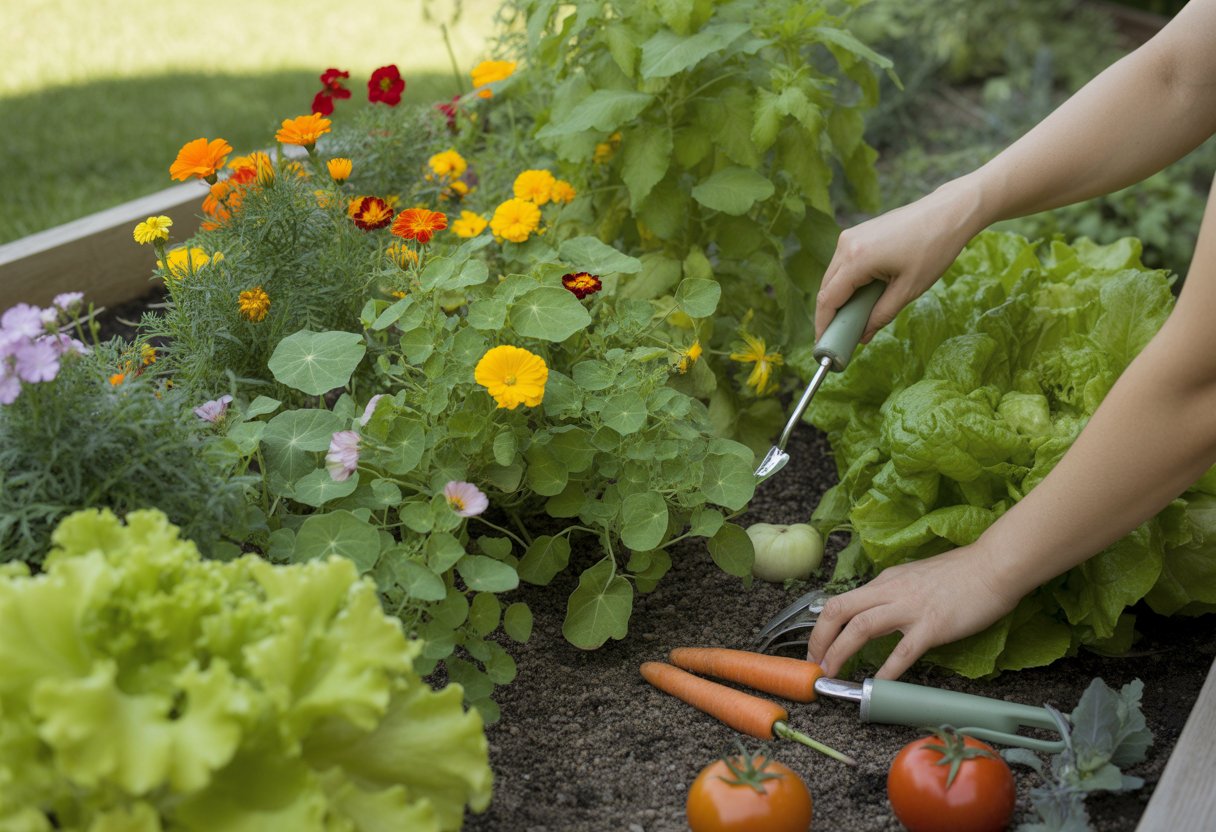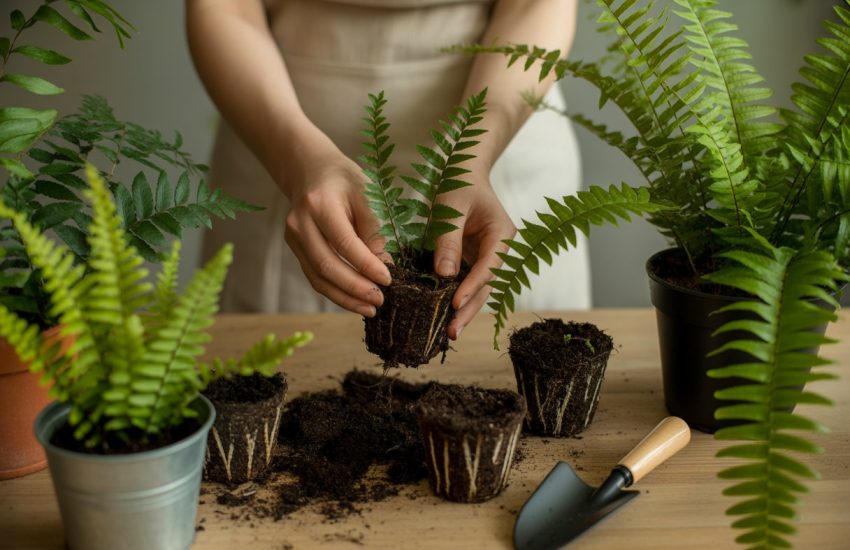Companion Planting Flowers and Veggies for Optimal Garden Growth and Pest Control
Companion planting means growing flowers and vegetables together to boost growth, keep pests in check, and make pollination easier. It’s all about creating a balanced garden where plants help each other out, leading to healthier crops and less need for chemicals.

Flowers near veggies attract helpful insects that eat pests or improve the soil. Gardeners use this method to get bigger harvests and keep things sustainable.
If you use companion planting, you can save space and let nature handle some of the pest control. Knowing which flowers and veggies make good neighbors is pretty important here.
Fundamentals of Companion Planting Flowers and Veggies
Companion planting means putting certain flowers and veggies together to help your garden thrive. You combine plants that boost each other’s growth, fight off pests, and share nutrients.
It’s not just about what looks nice—plants really do affect the soil and the way your garden works.
How Companion Planting Works
Plants interact in ways that can help (or sometimes hurt) their neighbors. Some flowers, for example, release chemicals that scare off bugs that would otherwise munch on your veggies.
Marigolds, for instance, can keep nematodes and aphids away from tomatoes and beans. Beans fix nitrogen in the soil, which leafy greens like spinach love.
Planting these together means you don’t need as much fertilizer. Timing and spacing matter, too.
If you arrange things so every plant gets enough air and sun, you’ll see fewer diseases. Companion planting lets you skip a lot of chemicals and still get better harvests.
Benefits for Flower and Vegetable Gardens
Companion planting brings a nice balance to your garden. Flowers invite bees and other pollinators, so you get more veggies and better fruit.
Put sunflowers near cucumbers and you’ll probably notice more cucumbers. Some plant combos also mess with pests’ senses, making it harder for them to find your crops.
Dill next to cabbage attracts bugs that eat cabbage worms. That means fewer pesticides.
Mixing up your plants helps keep soil healthy and pests from taking over. It also makes harvesting easier since you can group plants with similar needs together.
Soil Health and Plant Interactions
Companion planting shapes soil nutrient cycling. Peas and beans, for example, pull nitrogen from the air and share it through their roots.
Tomatoes and peppers planted nearby benefit from this extra nitrogen. Certain flowers and herbs, like calendula and chamomile, make soil friendlier for good microbes.
If you rotate crops and mix in companion planting, you’ll avoid wearing out your soil. Swapping nitrogen-fixers with heavy feeders keeps the ground fertile.
A mix of flowers and veggies also helps fight off soil diseases, thanks to different root structures and a busier microbial life.
Top Flower and Vegetable Combinations
Some flower and veggie pairs just work better together. They boost growth, fend off pests, and bring in pollinators.
Certain flowers add color and draw good bugs, making the veggie patch livelier and more productive.
Classic Pairings: Tomatoes and Marigolds
Marigolds repel nematodes and whiteflies that bother tomatoes. Stick marigolds by your tomato rows and you’ll probably see fewer pests.
Marigolds also bring in pollinators and helpful bugs, which means more tomatoes. Their strong scent covers up tomato smell, confusing bad bugs.
Both like the same sun and soil, so they’re easy to grow together. Plus, the color pop from marigolds doesn’t hurt.
Beneficial Flowers: Nasturtium, Borage, and Zinnias
Nasturtiums lure aphids away from beans and squash, acting as a trap crop. They also scare off whiteflies and give soil a little nitrogen boost when they’re near peas or beans.
Borage is a bee magnet, which helps with pollination for fruits and veggies. It can even make tomatoes and strawberries taste better.
You can use borage leaves as mulch or compost—they’re packed with minerals. Zinnias pull in pollinators like bees and butterflies, which is great for cucumbers, squash, and lettuce.
Their bright blooms also attract bugs that eat pests. Zinnias thrive in sunny spots with lots of veggies.
Vegetable Partners: Beans, Corn, and Squash
Beans add nitrogen to the soil, which corn and squash appreciate. Corn acts as a natural trellis for beans.
Squash spreads out and shades the ground, keeping weeds down and soil moist. Its prickly leaves can fend off some pests.
This “Three Sisters” combo supports itself and works in lots of climates. Together, they boost soil health, fight pests, and use space well.
Herbs in Companion Planting
Aromatic herbs like basil, chives, and rosemary keep pests away from veggies. Basil improves tomato flavor and drives off flies and mosquitoes.
Chives repel aphids and help lettuce by stopping fungal diseases. Thyme brings in good bugs and helps control pests among veggies.
Dill attracts predatory wasps that protect cabbage and lettuce. Parsley supports caterpillars that turn into pollinators and brings in more helpful insects.
Well-placed herbs make your garden healthier and more diverse, so you don’t need as many chemicals. Plus, you can eat them—always a bonus.
Pest Control and Pollination Through Companion Planting

Pairing specific flowers and veggies can change how pests behave and boost pollination. Some plants scare off bad bugs, while others attract the good ones that keep your garden balanced.
Deterring Harmful Insects and Diseases
Marigolds release natural compounds that keep nematodes and aphids at bay. Onions and garlic smell strong enough to drive away lots of insects.
Plant these near sensitive crops to create a sort of invisible barrier. This makes it much harder for pests to find what they’re after, and you don’t have to reach for chemical pesticides as often.
Attracting Beneficial Insects and Pollinators
Cosmos and other flowers bring in bees and butterflies, which help veggies produce more and better fruit. Ladybugs and lacewings flock to flowering plants, hunting down aphids and other pests.
Mixing in different flowers with your vegetables keeps the ecosystem lively. More pollinators and good bugs mean fewer problems.
Managing Pests: Aphids, Cabbage Worms, and Beyond
Garlic and onions planted near veggies keep aphids away with their strong smell. Marigolds also help by confusing aphids or calling in their predators.
Cabbage worms don’t like the smell of onions and garlic, so adding those near cabbage-family plants cuts down on damage. Keeping your plant mix diverse and rotating crops helps keep pests from getting out of hand.
Planning and Designing a Companion Flower and Veggie Garden

A good companion garden finds the sweet spot between plant needs, pest control, and healthy growth. Picking the right plants, arranging them smartly, and thinking about the seasons all play a part.
Choosing the Right Plant Varieties
Pick veggies and flowers that actually help each other. Marigolds next to peppers and eggplants can cut down on nematodes and aphids.
Spinach and radishes make a good pair—radishes grow fast and loosen up the soil for spinach roots. Flowers like echinacea and sunflowers pull in pollinators, giving strawberries, peas, and broccoli a productivity bump.
Skip planting fennel near most veggies, especially cabbage and cauliflower—it tends to stunt them. Think about how plants grow and what soil they like.
Carrots and celery both want steady moisture, so they’re happy together. Mustard planted with potatoes can help keep pests away.
Layout Tips for Success
Plan your garden with plant height and sunlight in mind. Put taller plants like asparagus and sunflowers on the north side so they don’t block the sun from shorter crops like lettuce and beets.
Group plants with similar watering needs together—kale and broccoli like steady water, but radishes can handle it drier. Raised beds or rows make it easier to separate these groups.
Mix in ornamental flowers like echinacea and marigolds right in your veggie beds for color and pest control. Leave paths so you can get in there for weeding or harvesting without stepping all over your root crops.
Seasonal Rotation and Garden Maintenance
Rotate your crops every year. This helps cut down on soil-borne diseases and keeps nutrients from running out too fast.
Try not to plant cabbage or cauliflower where broccoli or kale grew last season. They tend to attract the same pests, which can be a headache.
Stagger your harvests if you can. Pulling early radishes leaves room for summer peppers or eggplants. Later on, tossing in some mustard or leaf lettuce gives you ground cover and helps keep weeds from taking over.
Keep an eye on your plants and snip off any diseased or infested stems as soon as you spot them. If you add companion flowers like echinacea, you’ll attract helpful insects that stick around and deal with pests throughout the year.

